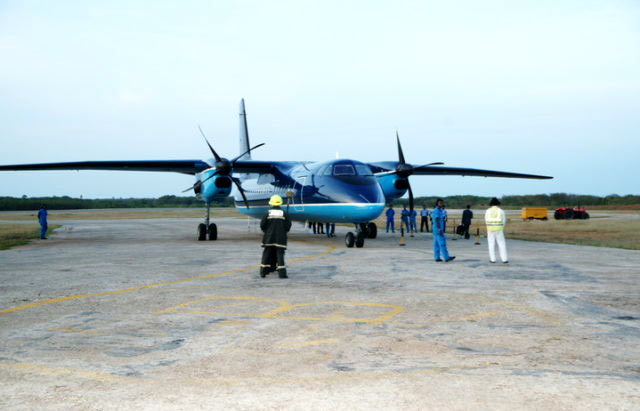Lanka snubs India, says ‘no’ to handing over of Palali Airport

After Nepal snubbing India by refusing to join military exercises in Pune, it was now the turn of another neighbour, Sri Lanka — deciding against giving control of Palaly Airport to India. Just two days ago, on Monday, state-owned Airports Authority of India (AAI) had announced to prepare a detailed project report for development of this airport in Tamil-dominated Northern Sri Lanka. It had described it first project for the AAI in the island nation.
On Wednesday, Sri Lankan Civil Aviation Minister Nirmal Sripala De Silva told the parliament that the government had no intention of handing over the airport to Indian authorities. He further said the airport would be developed in partnership with the Tourism Development Fund and the Civil Aviation Authority.
In a release issued on Monday, the AAI said it has signed an agreement with External Affairs Ministry for “preparation of a Detailed Project Report for development of Palaly airport in Sri Lanka”. The official said all the technical and design aspects would be covered in the DPR, which is expected to be completed in three months time.
Silva, junked the statement and said not just Palaly, but the government had no intention of handing over Higurakgoda, Baticaloa, Koggala, Digana and Trincomlee airports to other countries and all the airports would be developed as domestic airports. AAI’s bid to develop the airport was being seen as a strategic move as Palaly is in Jaffna, a predominantly Tamil territory. It was also dubbed as a move to counter China’s growing presence in the region by developing critical infrastructure.
Silva had told Lankan parliament that the country’s government had asked the Airports Authority of India (AAI) to submit its business plan to operate the loss-making Mattala Rajapaksa International Airport.
After the Sri Lankan war was over in 2009, India has been involved in the reconstruction and redevelopment of the northern province. Palaly is important due to the fact that it is in the sensitive Tamil-dominated northern province, traditionally closer to India. By developing critical infrastructure here, India was aiming to keep a foothold in this part of Sri Lanka.
(Source: DNA India)
Latest Headlines in Sri Lanka
- Lanka Ashok Leyland donates vehicles worth Rs. 65 Million to support Sri Lanka’s disaster response December 6, 2025
- Sri Lanka President orders unified drive to speed up disaster recovery December 6, 2025
- Sri Lanka extends income tax return deadline due to Cyclone Ditwah December 6, 2025
- CBSL announces relief measures for people and businesses hit by cyclone and floods December 6, 2025
- German Defence Attaché calls on Sri Lanka’s Defence Secretary December 5, 2025



Before taking such decisions, there should be a clear mandate from the public to this matter. Politicians in the country can’t take such decisions on their own. People never voted in 2015 to sell things in the country nor robbing CBSL.
Dear People in SL, Do not vote for anyone who don’t have a degree or professional qualification in next election. If there’s no one to vote, then don’t vote .
Don’t worry Maaraya,
They came to Jaffna as IPKF and lost more that 10,000 soldiers.
We will deal with them , when the Bastards come to our homeland.
We have contradictory statements from politicians and the Government these days ! This is quite irresponsible and reflects the system of government. NATIONAL SECURITY is paramount. Doesn’t the Government understand/acknowledge this or are they not bothered about this. NO politician should be allowed to trifle with a matter like National Security. The Country SHOULD come FIRST, ALWAYS.